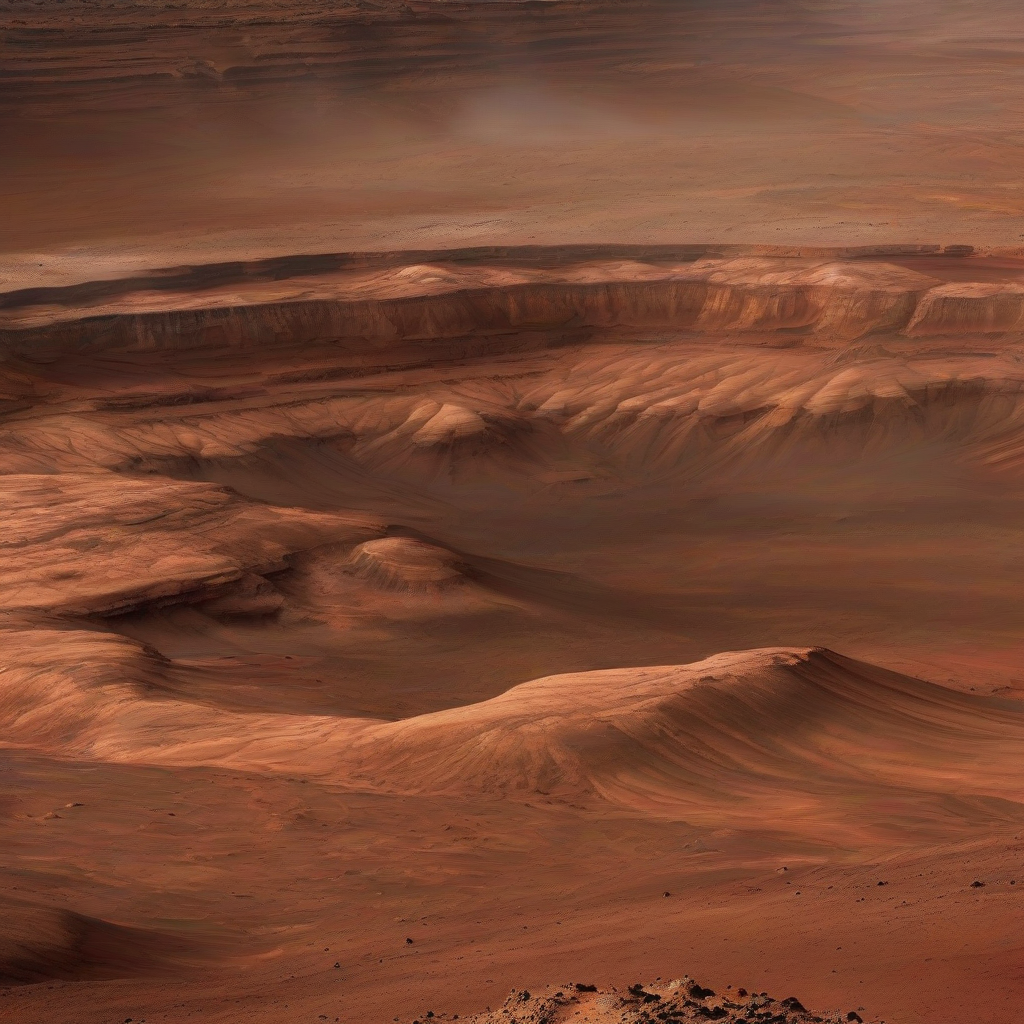# From Dust to Discovery: Martian Geology and Its Clues About Planetary Evolution
Mars, often called the "Red Planet," has long fascinated scientists and space enthusiasts alike. Its rusty hue, mysterious surface features, and the tantalizing possibility of ancient life make it one of the most studied planets in our solar system. But what truly sets Mars apart is its geology—a complex story written in rock and dust that offers clues about planetary evolution.
Through decades of exploration, NASA missions have transformed our understanding of Mars from a distant enigma to a dynamic world with a rich geological history. In this blog post, we'll delve into how Martian geology helps us unlock secrets about the planet's past, its evolution, and even our own place in the cosmos.
---
Peering Beneath the Dust: Mars’ Geological Identity
Mars is a planet of extremes. Its towering volcanoes, sprawling canyons, and ancient riverbeds are testaments to a turbulent past. But to truly understand its evolution, scientists look beyond the surface features and study the rocks, minerals, and soil that define its geological makeup.
The Role of Mars’ Thin Atmosphere
Unlike Earth, Mars has a thin atmosphere that offers little protection from cosmic impacts or solar radiation. This has made the planet’s surface a geological time capsule, preserving evidence of events that occurred billions of years ago. For example:
- Impact Craters: Mars is covered in craters, some dating back to the Noachian period over 4 billion years ago. These craters help scientists estimate the ages of surface features and provide insights into the planet's early bombardment history.
- Wind and Dust: Mars’ thin atmosphere allows wind to sculpt the surface, creating dunes, ripples, and dust storms that continuously shape the landscape.
Water: The Missing Puzzle Piece
Perhaps the most exciting aspect of Martian geology is the evidence of water. Ancient river channels, deltas, and lake beds point to a time when liquid water flowed across the surface. NASA's Mars Reconnaissance Orbiter (MRO) and Curiosity rover have confirmed the presence of minerals like clay and sulfate, which form in the presence of water. These findings suggest that Mars was once warmer and wetter, with conditions potentially suitable for life.
---
NASA Missions: Piecing Together Mars’ Geological History
NASA has been at the forefront of exploring Martian geology, deploying cutting-edge tools and technologies to uncover the planet’s secrets. Each mission has expanded our understanding, revealing new layers of Mars’ story.
The Viking Legacy: Early Martian Exploration
The Viking 1 and 2 missions in the 1970s were the first NASA spacecraft to land on Mars. Equipped with cameras and instruments, these landers provided the first close-up images of the Martian surface and analyzed soil samples. Viking revealed a landscape marked by volcanic rocks and chemical processes, sparking debates about the possibility of microbial life in the soil.
Spirit, Opportunity, and the Hunt for Water
The twin rovers Spirit and Opportunity revolutionized Mars exploration in the early 2000s. These robotic geologists roamed the surface for years, studying rocks and sediments and uncovering compelling evidence of ancient water activity. Key discoveries include:
- Hematite “blueberries”: Opportunity found small, spherical mineral deposits that form in water-rich environments, indicating Mars once had a wet climate.
- Silica deposits: Spirit detected high concentrations of silica in Martian soil, hinting at hydrothermal systems that could have supported microbial life.
Curiosity: Gale Crater’s Geological Treasure Trove
The Curiosity rover, which landed in Gale Crater in 2012, took Mars exploration to the next level. Gale Crater was chosen because it contains layered rocks that preserve a detailed record of Mars’ environmental changes. Curiosity’s findings include:
- Mount Sharp’s Layers: The rover has studied the layers of sedimentary rock in Mount Sharp, revealing a history of fluctuating wet and dry periods.
- Organic Molecules: Curiosity detected organic molecules in rock samples, a tantalizing clue in the search for life.
Curiosity’s work has shown that Mars underwent significant geological and climatic changes over billions of years, transitioning from a wet environment to the arid, cold desert we see today.
Perseverance and the Search for Ancient Life
NASA’s Perseverance rover, which landed in Jezero Crater in 2021, is focused on astrobiology and geology. Jezero was once home to an ancient river delta, making it an ideal site to study Mars’ watery past. Key objectives include:
- Rock Core Sampling: Perseverance is collecting rock cores for eventual return to Earth, where they will be analyzed for signs of ancient life.
- SHERLOC Instrument: Using advanced tools like SHERLOC
